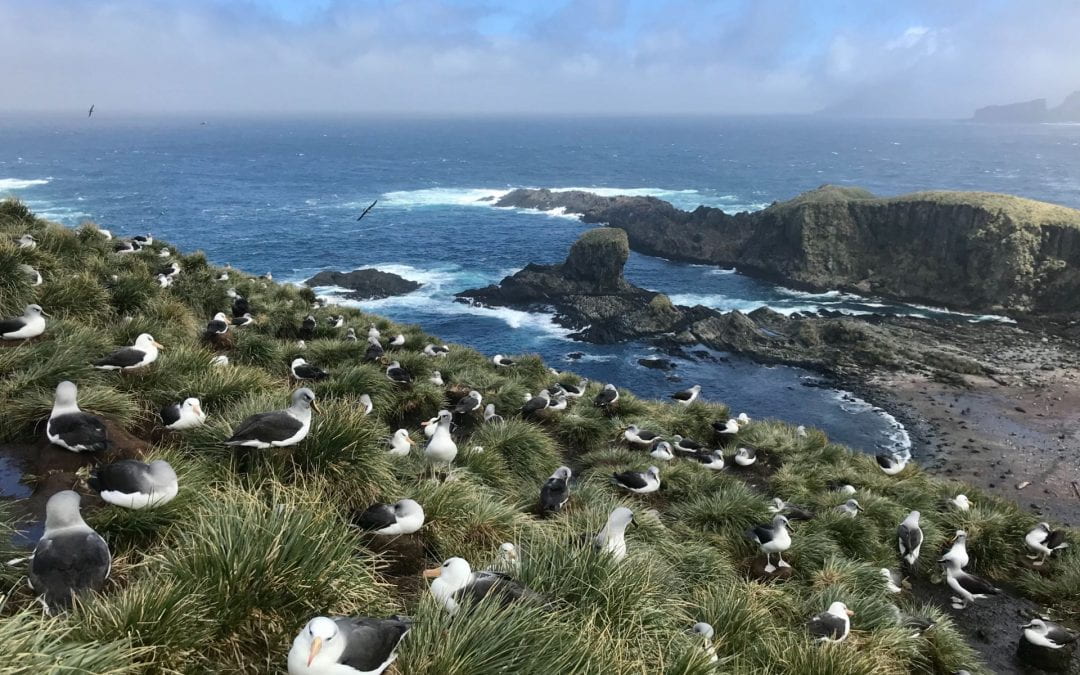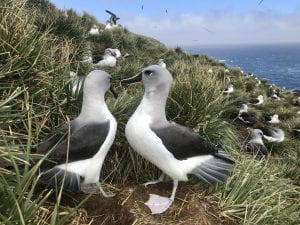The 2021-2022 field season is officially underway at Bird Island, South Georgia! By the time of our arrival in mid-December, both black-browed and grey headed albatross were incubating their eggs while the wandering albatross began egg laying a few weeks later. Coming back strong from the pandemic, we have ambitious plans to deploy magnetometer, accelerometer, GPS, and heart rate monitors tags on black-browed, grey-headed, and wandering albatross during the chick-rearing stage with Freya Blockley, a seabird Field Assistant with the British Antarctic Survey, spearheading these deployments.
This year, we are prioritizing deploying heart rate monitors on the wandering albatross, specifically, as our previous field seasons have collected this data from black-browed and grey-headed albatrosses. Collecting this additional data will allow us to expand our work quantifying energy expenditure and the creation of energy landscapes with respect to wind, and provides a great opportunity to understand how energetic expenditure may be different in this much larger species. Ground-truthing to the heart rate data, we can use accelerometer-derived proxies to estimate how much energy an albatross is expending at sea. Melinda Conners, a former postdoctoral researcher in the Thorne Lab, is working to publish a paper showing that the best proxy for energetic expenditure is the percentage of time an albatross is flapping while in flight. We hope to use this proxy to understand how wind speed and energy expenditure are related and how future wind-variability due to climate change may affect albatross energetics and reproductive success.
Grey-headed albatross pair Wandering albatross sitting on its nest
As of mid-February, we have already successfully deployed and retrieved tags from incubating and brooding black-browed and grey-headed albatrosses. Additionally, we will soon be getting heart rate data from wandering albatrosses. Check back soon for more updates!


